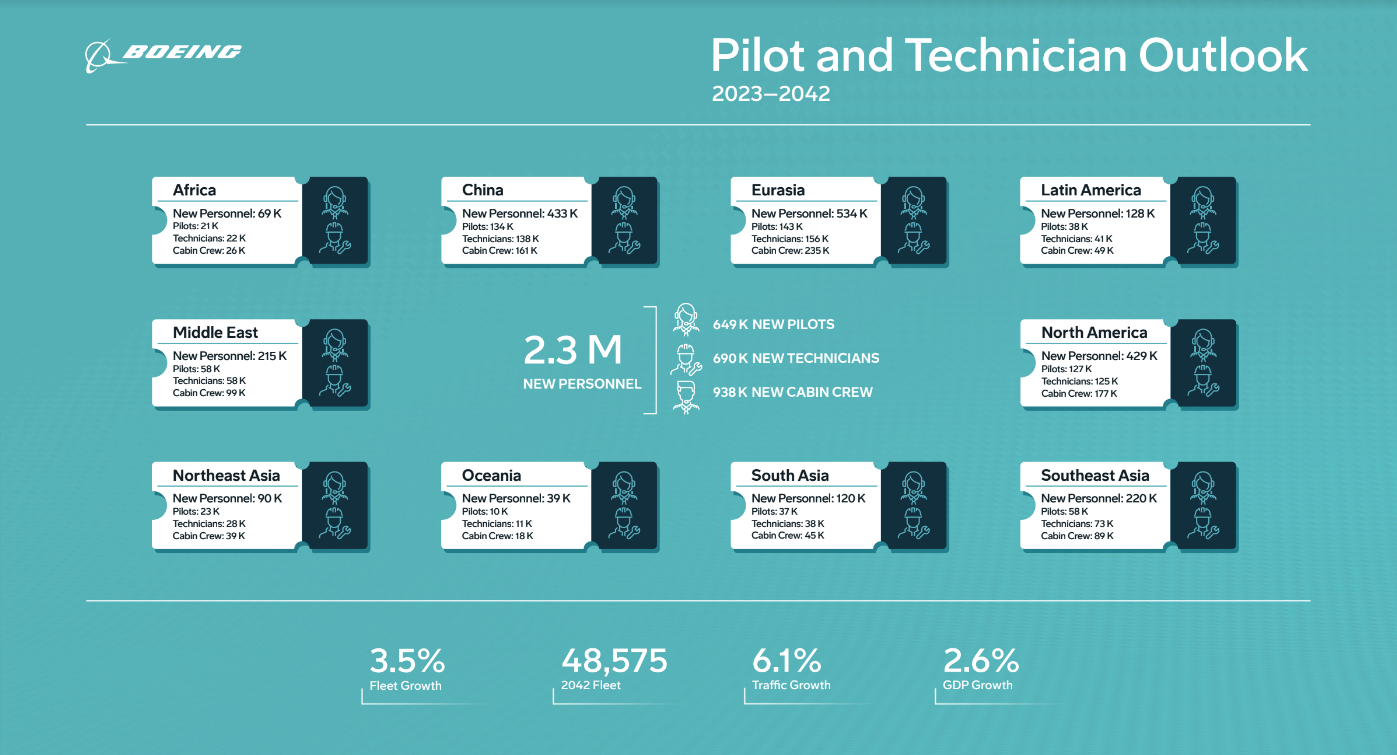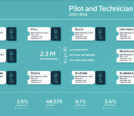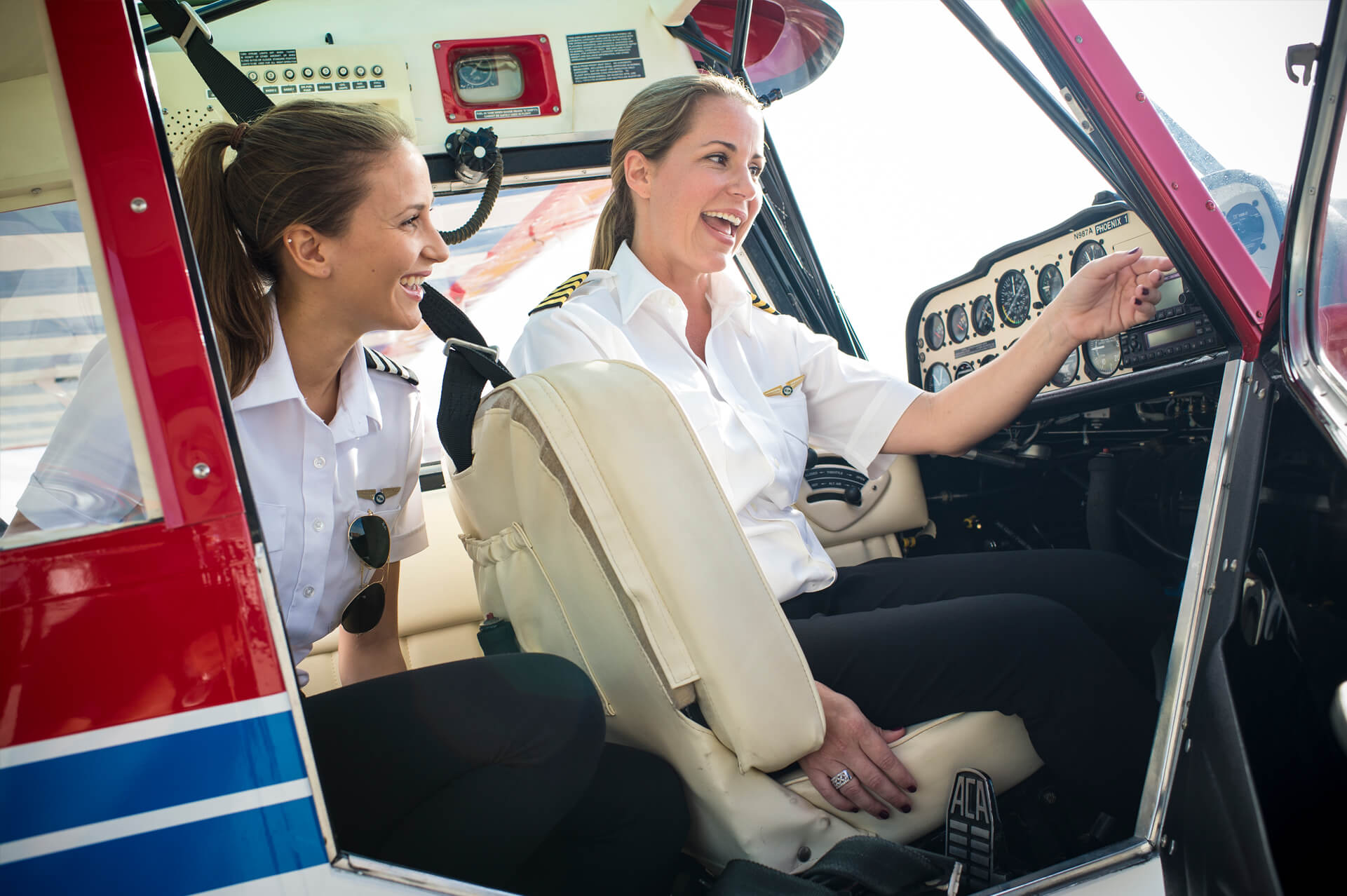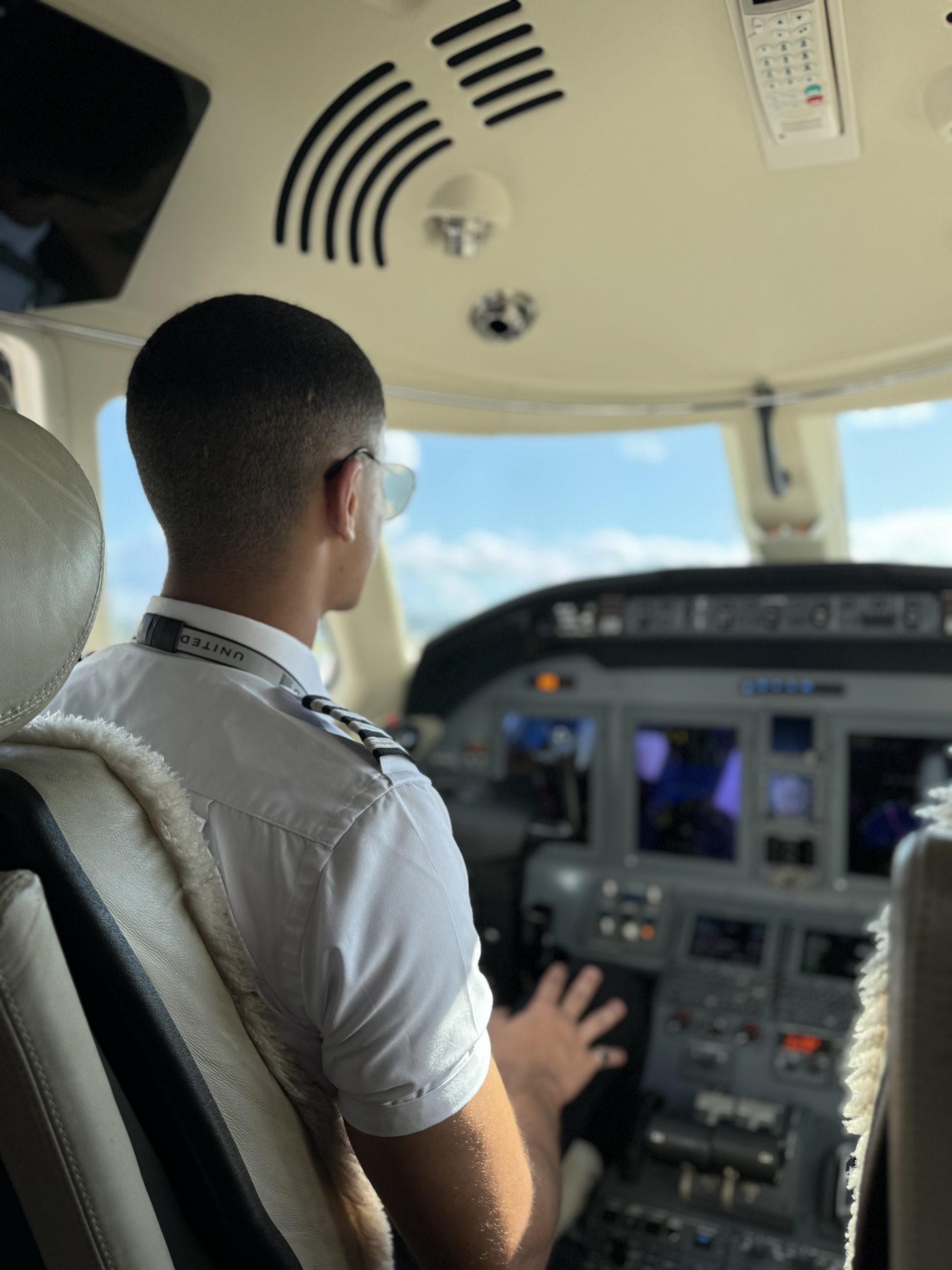How to Become an Airline Pilot
For many, becoming an airline pilot may seem like a dream, however, with research and dedication to flight training, it is a very achievable goal to have a lasting career as an airline pilot. According to Boeing’s Pilot and Technician Outlook, at a glance, “The long-term demand for newly qualified aviation personnel remains strong, as 649,000 new pilots… will be needed to fly and maintain the global commercial fleet over the next 20 years” (2023). The decision to become a pilot is easy, but the effort that goes into making those pilot dreams take off is dependent on a multitude of factors:
- What goes into researching a flight school?
- How to find the best flight training to achieve that end goal?
- How does one apply to a flight school?
- What are the steps that need to be taken prior to beginning flight training? What licenses are needed prior to beginning a career as an airline pilot?
- How to build hours to be eligible to work for an airline?
- And lastly, how to be hired as an airline pilot?
The goal of this newsletter is to outline a career as an airline pilot, and once you are done reading it, you should have the necessary knowledge and steps to land that dream job.
Eligibility for Becoming a Student Pilot
- Must be at least 17 years old
- Obtain a high school diploma or equivalent to
- Able to read, speak, and understand English.
- Be able to pass an FAA medical.
How to Choose a Flight School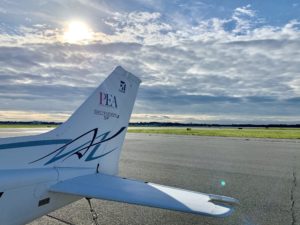
You have decided you are ready for your pilot dreams to take off. The next step is to begin researching flight schools and choosing one that aligns you with the ultimate goal of becoming an airline pilot: Phoenix East Aviation has successfully been training pilots for over 50 years and there is no sign of slowing down.
One of the most important decisions is selecting the right flight school. This choice can significantly impact one’s ability to succeed in the aviation industry, and there are multiple factors to consider. Not all flight schools are the same, so doing research prior to starting is crucial. Take a look at some of the key factors to keep in mind while researching flight schools.
- Accreditation: First and foremost, make sure the flight school is properly accredited. Accreditation not only ensures the training program meets established standards and provides a quality education to its students, but it also financially secures its students.
- Quality of Instruction: The expertise and experience of the school’s instructors is extremely important as it correlates directly with one’s success in their ground school and beyond – in the skies. Part 141 schools require their instructors to be standardized and teach at the highest level. FAR Part 141 will be further discussed below.
- Aircraft Fleet: The condition, maintenance, modernity and availability of the aircraft fleet should be considered when researching a flight school. Well-maintained aircraft will properly prepare the student pilot for the aircraft they will fly professionally.
- Location and Weather: Where a flight school is located can significantly impact the training an individual receives, negatively or positively. Consider whether the location provides the ability to fly consistently, or if the location may prolong flight training because of “weather delays”.
- Training Costs: Flight training is a major financial investment. Therefore it is imperative to research and compare costs across several schools, and reach out to the school’s Admissions Department to ensure all questions and potential fees are understood. Always remember that affordable doesn’t necessarily mean the best value.
Phoenix East Aviation has a main campus in Daytona Beach, Florida and an auxiliary training facility located 30 miles north, in Palm Coast that specializes in accelerated flight training. Along with that, PEA is 1 of 5 flight schools in the United States authorized to offer their international students the F1 visa, making them a global destination for aviation education.
Part 141 vs. Part 61
Determining if a Part 141 or Part 61 flight training program better aligns with one’s goal of becoming an airline pilot, is an essential early step in their aviation training and career. Understanding the differences between the two types of FAA training regulations and different flight training programs is important when choosing what will help an individual get to their ultimate goal.
Part 141
- Part 141 curriculum offers students a highly structured training path, as it is mandatory to get the Federal Aviation Administration (FAA)’s approval for the program’s curriculum, instructors, lesson plans, and stage checks at the end of each course. Flight schools must meet rigorous requirements to provide this type of training to its students.
- Part 141’s structured, regulated curriculum earns it a respected reputation among several aviation employers.
- Some Part 141 schools like PEA, also hold self examining authority on courses which helps avoid significant delays associated with checkrides that need a DPE.
Part 61
- Part 61 allows for more flexibility in scheduling and is designed mainly for individuals who may have other commitments that limit their availability in full-time flight training.
- Students can move at their own pace and focus on the specific type of flying they want to do.
While aviation employers hire pilots from both Part 141 and Part 61 flight training backgrounds, the standardized curriculum of Part 141 programs appeal to certain employers seeking pilots with this type of regulated flight experience. However, Part 61 remains a perfectly valid path to becoming a professional airline pilot that can open the doors to a multitude of aviation career opportunities.
PEA is uniquely approved by the FAA under FAR Part 141 to complete the Initial Commercial Pilot License in 50 hours, compared to nearly all other FAA Part 141 Flight Schools requirements of 120 hours. They have proved to the FAA they train at a high level of proficiency where they are able to provide their students with this unique opportunity. This helps cut down on both training timeline and cost!
Receiving a FAA Medical Exam is Necessary
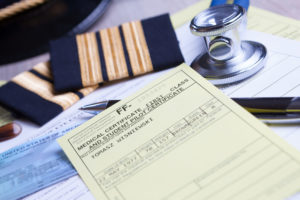 Taking on the skies as an airline pilot is the career goal, however an important step that is necessary to begin flight training is getting a medical that the Federal Aviation Administration (FAA) requires to ensure the pilot as well as anyone around them. Receiving a medical will provide insight on any condition that may prevent an individual from beginning their flight training. Let’s examine some important points to keep in mind.
Taking on the skies as an airline pilot is the career goal, however an important step that is necessary to begin flight training is getting a medical that the Federal Aviation Administration (FAA) requires to ensure the pilot as well as anyone around them. Receiving a medical will provide insight on any condition that may prevent an individual from beginning their flight training. Let’s examine some important points to keep in mind.
- How to Schedule an Aviation Medical: All medicals must be scheduled with a designated Aviation Medical Examiner (AME). There is a list of approved Aviation Medical Examiners that can be found on the FAA’s website. PEA’s Student Services can provide assistance in scheduling a FAA medical exam appointment with a local AME.
- Types of Aviation Medical Exams
- First-class Medical: The highest level of medical certification which applies to pilots who hold an Airline Transport Pilot License (ATP), therefore mandating a first-class medical, or for those whose employers mandate first-class medical standards. If an individual is under 40-years-old, they must renew it every 12 months. However, if an individual is 40 years of age or older, they must renew their first-class medical every 6 months.
- Second-class Medical: This medical is necessary for pilots who fly for most commercial operations such as crop dusting, cargo transport, passenger charter flights, or any other commercial roles. As a commercial pilot, it is imperative to keep a valid second-class medical in order to keep operating privileges. Unlike the first-class medical that comes with different renewal times depending on an individual’s age, a second-class medical has a 12-month period before renewal is required, regardless of one’s age.
- Third-class Medical: Prospective and student pilots who are just beginning their flying journey need to obtain a third-class medical, which is the least restrictive level medical, necessary for flight training. This needs to be obtained prior to logging any flight hours, or working toward any license and/or ratings. A third-class medical is valid for 24 months if a pilot is under 40-years-old, but 60 months for those who are younger. Whether an individual’s end goal is to become an airline pilot, or would rather fly as a hobby, securing a third-class medical is critical. Obtaining this medical ensures one’s pilot dreams can begin.
- What to Expect During Your FAA Medical Exam: A FAA medical is straightforward, but understanding what to expect can put one’s mind at ease.
- The AME will review current and past health conditions through a series of questions.
- Be prepared to discuss complete medical history. Providing the most thorough and accurate information is essential for the AME to provide a fair assessment of the individual.
- Hearing and vision tests, and depending on the patient’s medical history, some may be more extensive than others. However for the most part, it is routine.
- The AME will assess general physical condition such as lung and heart health. This allows them to identify any potential issues that could impact the individual’s ability to fly safely.
- The FAA Medical Exam can take up to about 30 minutes, and by understanding what to expect allows one to approach this required step to begin an airline career, more confidently.
Private Pilot to Airline Pilot and Beyond: What to Expect
Completing flight training is a major accomplishment, and one that everyone should be proud of. Imagine walking through the doors of PEA having never flown a plane, and leaving with every license and certificate from Private Pilot to Flight Instructor Ratings, ready to take on the skies and secure your first aviation job. However, for a pilot looking to fly for a major airliner in the United States, they must have 1,500 flight hours prior to being eligible for an ATP certificate. How does one build hours when their flight training is over to move onto the airlines? Here is what to expect:
-
- The most common pathway for US pilots is: Private Pilot License > Instrument Rating > Commercial Pilot License > Instructor Ratings.
Pilots at PEA are eligible to apply for a position as a Certified Flight Instructor after obtaining their Instructor Ratings (both Certified Flight Instructor (CFI) and Certified Flight Instructor Instrument (CFII)). The process of becoming a CFI at PEA is like any job and interview process, therefore keep in mind that the position is not guaranteed when flight training begins. Certified Flight Instructors are able to log flight hours at an accelerated pace, quickly building the necessary experience required to reach 1,500 hours. Although it is the quickest way to accumulate hours, there are other ways to time build, take a look at the list below for some of the most well known ones.
- Cargo Pilot
- Charter Pilot
- Corporate Pilot
- Banner Towing Pilot
- Agricultural/Crop Dusting Pilot
- Photography Pilot
Aside from accumulating enough hours, the other requirements to obtain an ATP Certificate are:
- At least 23 years old
- Hold a Commercial Pilot License with an Instrument Rating
- Pass the ATP written exam and practical test
- Have at least 50 hours in a multi-engine aircraft
It is important to understand the requirements for each airline in order to have a lasting career as an airline pilot. Take time early on to thoroughly research not only the flight school and airline, but to also understand the qualifications and certifications required to be a pilot for that specific airline. Some important questions to keep in mind are:
- Are there minimum hourly requirements for total time or in a specific aircraft?
- Are specific ratings (i.e. instrument or type) required?
- Does the position require experience in areas such as multi-engine aircraft?
- Are there preferred pathways to take to get to that specific airline? (i.e United Aviate). PEA is a United Aviate partnered flight school. Students can apply to be a part of the United Aviate program as soon as they obtain their Private Pilot License.
- Does the flight school offer their students the opportunity to network with pilots and recruiters by hosting airline visits? PEA hosts monthly airline visits for their students, for this purpose.
Having a clear understanding of the criteria allows for an individual to better plan for their training and future career as an airline pilot. The more knowledge somebody has about entry requirements for their dream career as an airline pilot, the more effectively they can prepare themselves to stand out to be a competitive candidate. Don’t wait until after your flight training is completed to begin preparing for the career you want, but start before you walk through the doors of Phoenix East Aviation. That way, PEA’s esteemed Admissions Department can help your pilot dreams take off!




